Pasta Amatriciana – Authentic Recipe! (VIDEO)
This post may contain affiliate links. Please read our disclosure policy.
Pasta Amatriciana is a spicy tomato based pasta with pieces of rich pork (guanciale) and lots of pecorino cheese – this authentic Roman pasta recipe is easy to make, can be whipped up in 15 minutes, and proof of how sometimes the simplest dishes are the most delicious!
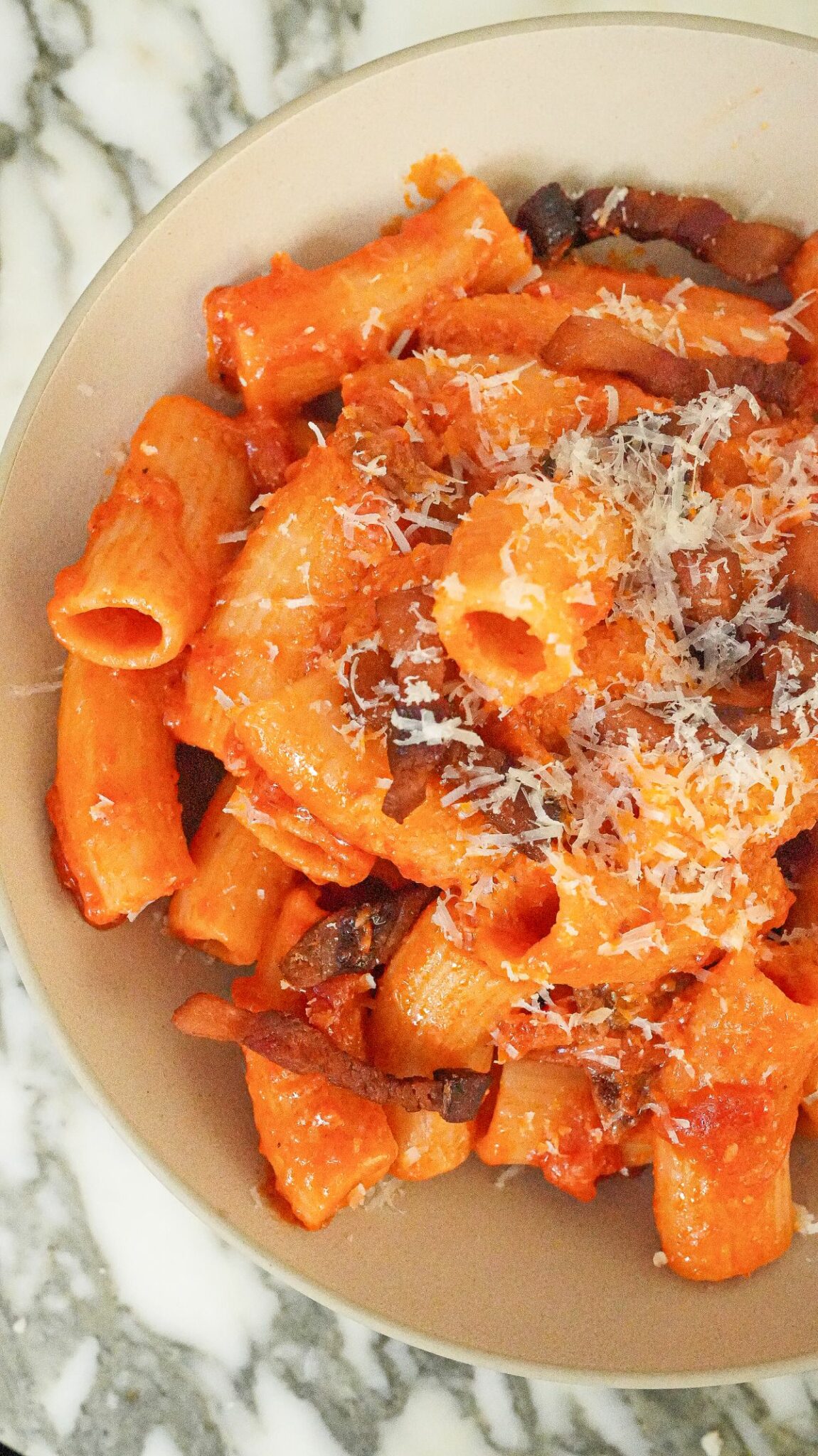
Watch the Pasta Amatriciana Recipe Video Below!
Table of Contents
Pasta Amatriciana Ingredient Tips
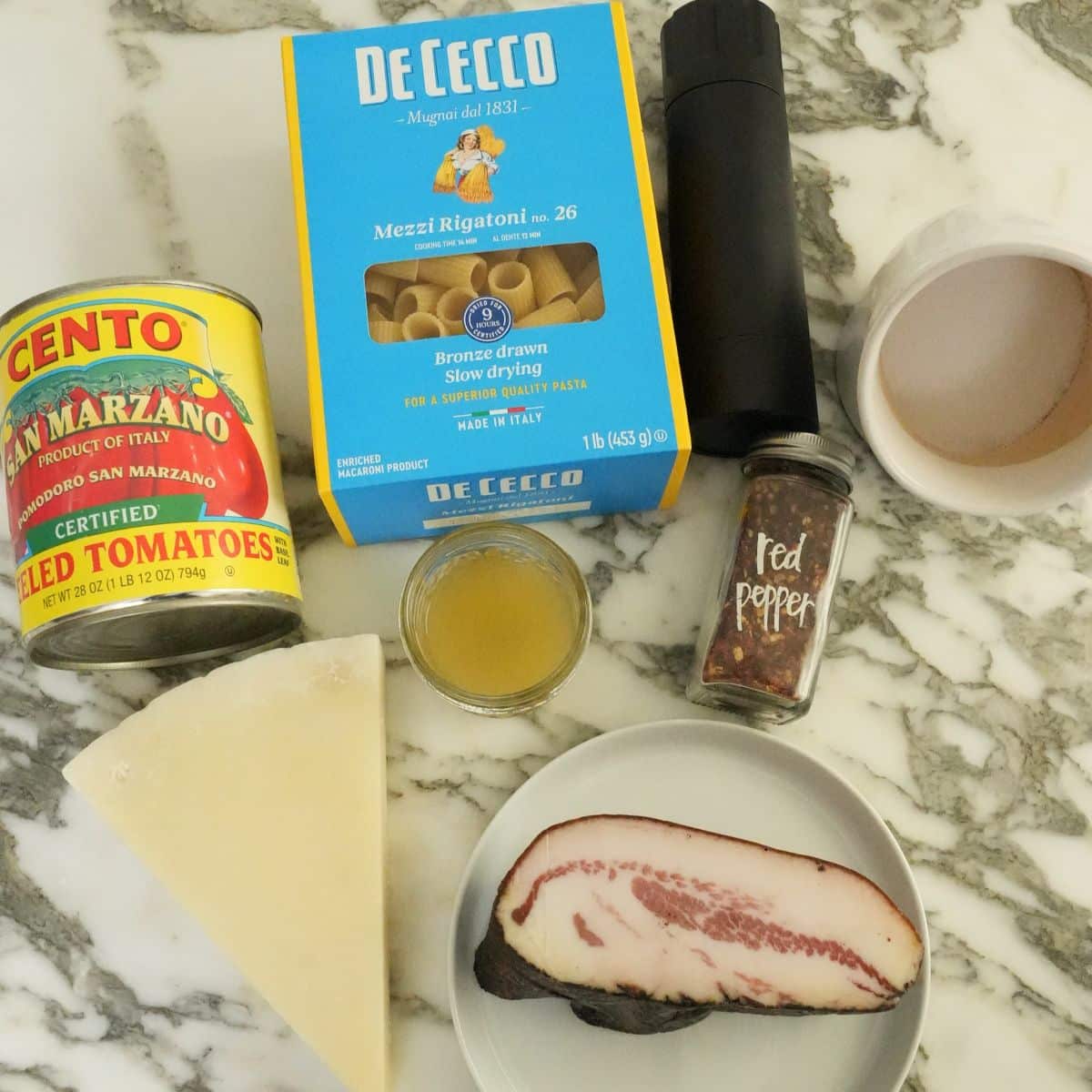
Pasta Amatriciana is one of the four Roman pastas (along with Cacio e Pepe, Carbonara and Pasta alla Gricia). Fun fact: Pasta Amatriciana is the ony one of the four that has a tomato based sauce!
- guanciale – Guanciale is an Italian cured meat that is made from pork jowl or cheeks. I usually purchase it from an Italian grocery store (in Los Angeles, I’ve bought this from Bay Cities or Eataly). If you don’t have an Italian grocery near you and can’t find it, you can use pancetta or bacon. The main difference between guanciale and pancetta or bacon is that guanciale has a more intense flavor and firmer texture.
- pasta – you can use any kind of pasta; I prefer rigatoni, bucatini, or spaghetti. You want a tube shaped pasta so that the sauce will fill inside the pasta.
- pecorino cheese, finely grated – Pecorino Romano cheese is similar to Parmesan cheese but made from sheep’s milk and is sharper and saltier. If you don’t have Pecorino on hand, you can sub with Parmesan cheese at a 1:1 ratio.
- peeled San Marzano tomatoes, crushed by hand – San Marzano tomatoes are famous for their balanced flavors – I love using them because I find that they are perfectly balanced in their sweetness and acidity, with that distinct tomato flavor! I try to always have a can of San Marzano tomatoes in my pantry – I get them from Trader Joe’s or Whole Foods. When I crush the tomatoes, I feel for the tougher stem ends of the tomato and discard them because they don’t break down easily in the sauce.
Love pasta but want seafood instead? Try Shrimp Scampi Pasta or Linguine with Clams!
Instructions
1. Prepare and Cook the Guanciale
Guanciale usually comes in thick slabs, which you’ll cut into whatever size you prefer. For Pasta Amatriciana, I recommend 1/4″ strips. First and foremost, you need to cut the tough outer rind around the guanciale.
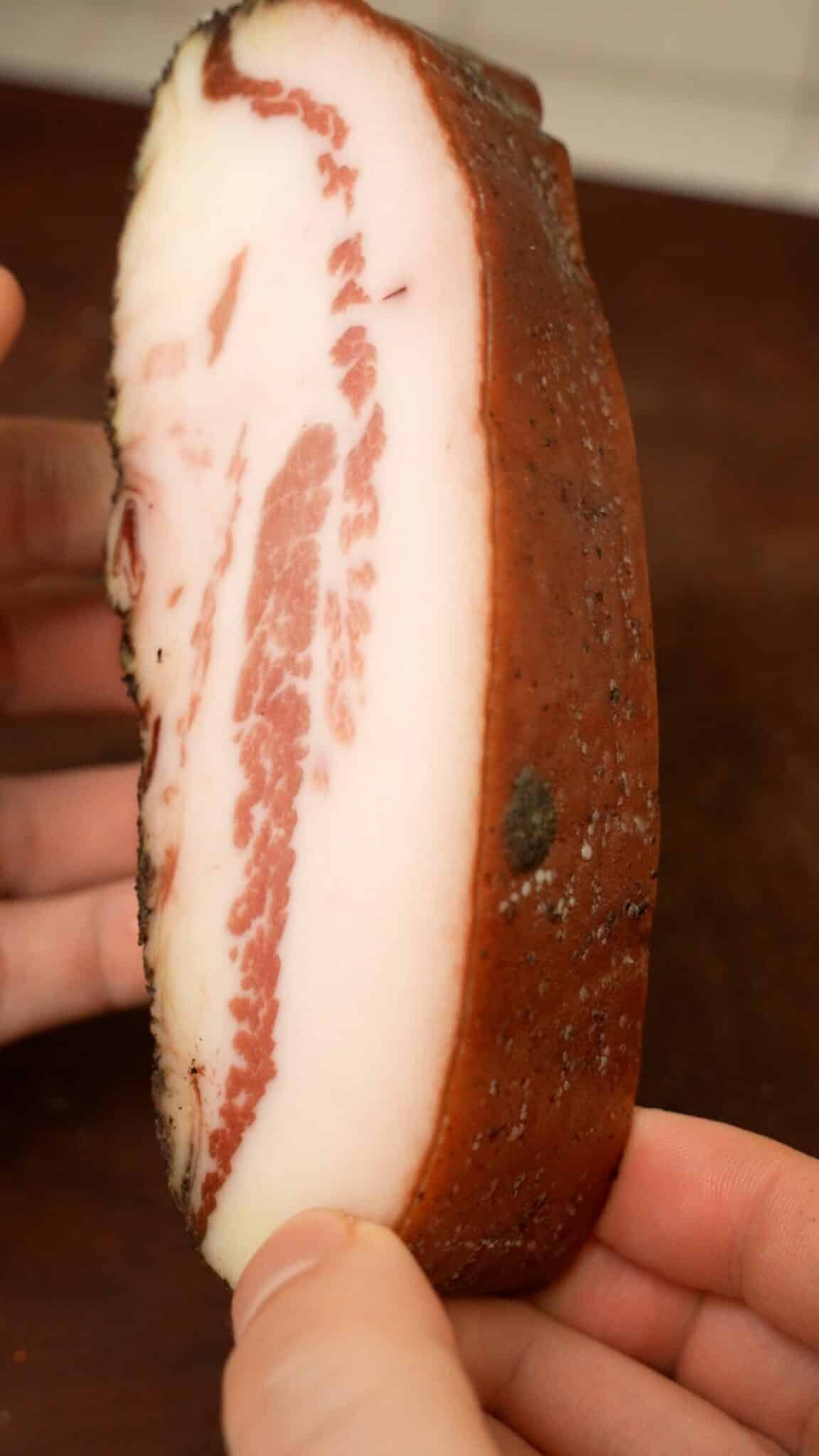
Slice your guanciale into 1/4″ thick slabs, then 1/4″ strips. Place in a cold pan. Turn the heat up to high and cook for 5-6 minutes, until the fat has rendered out and guanciale is crispy. Starting with a cold pan will help render out the fat.
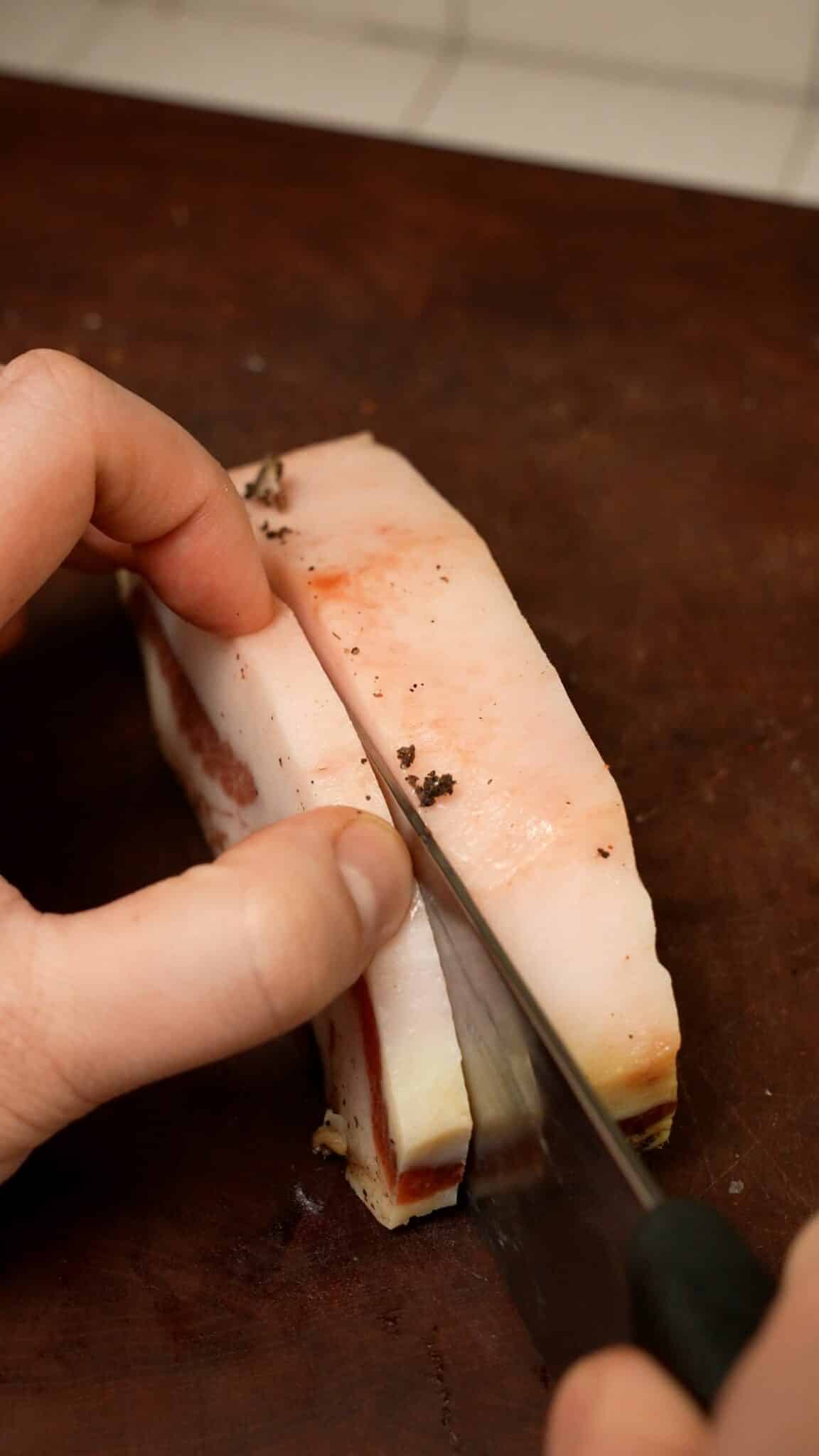
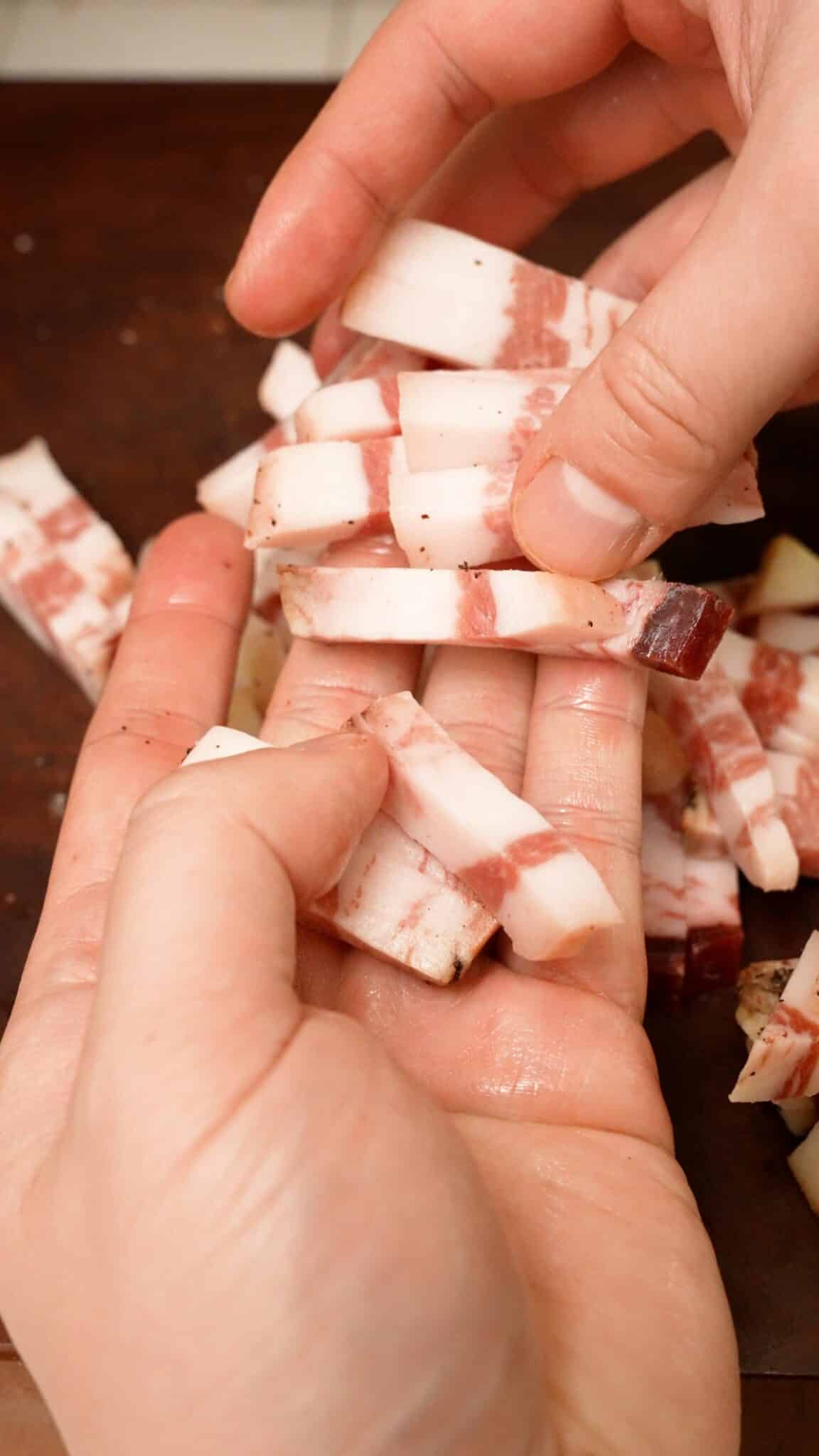
Strain the crispy guanciale out of the pan and drain on a paper towel, leaving the fat in the pan.
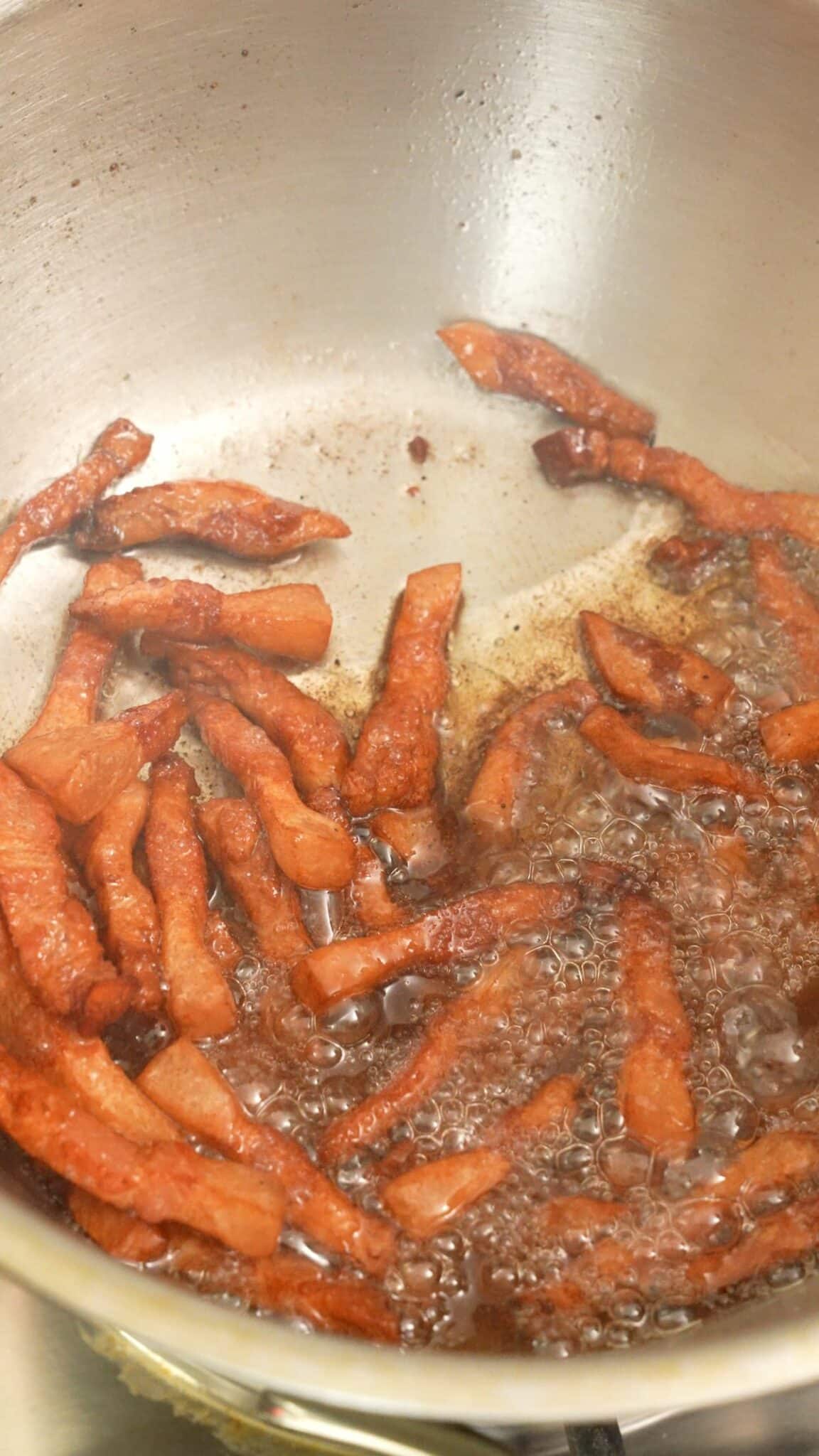
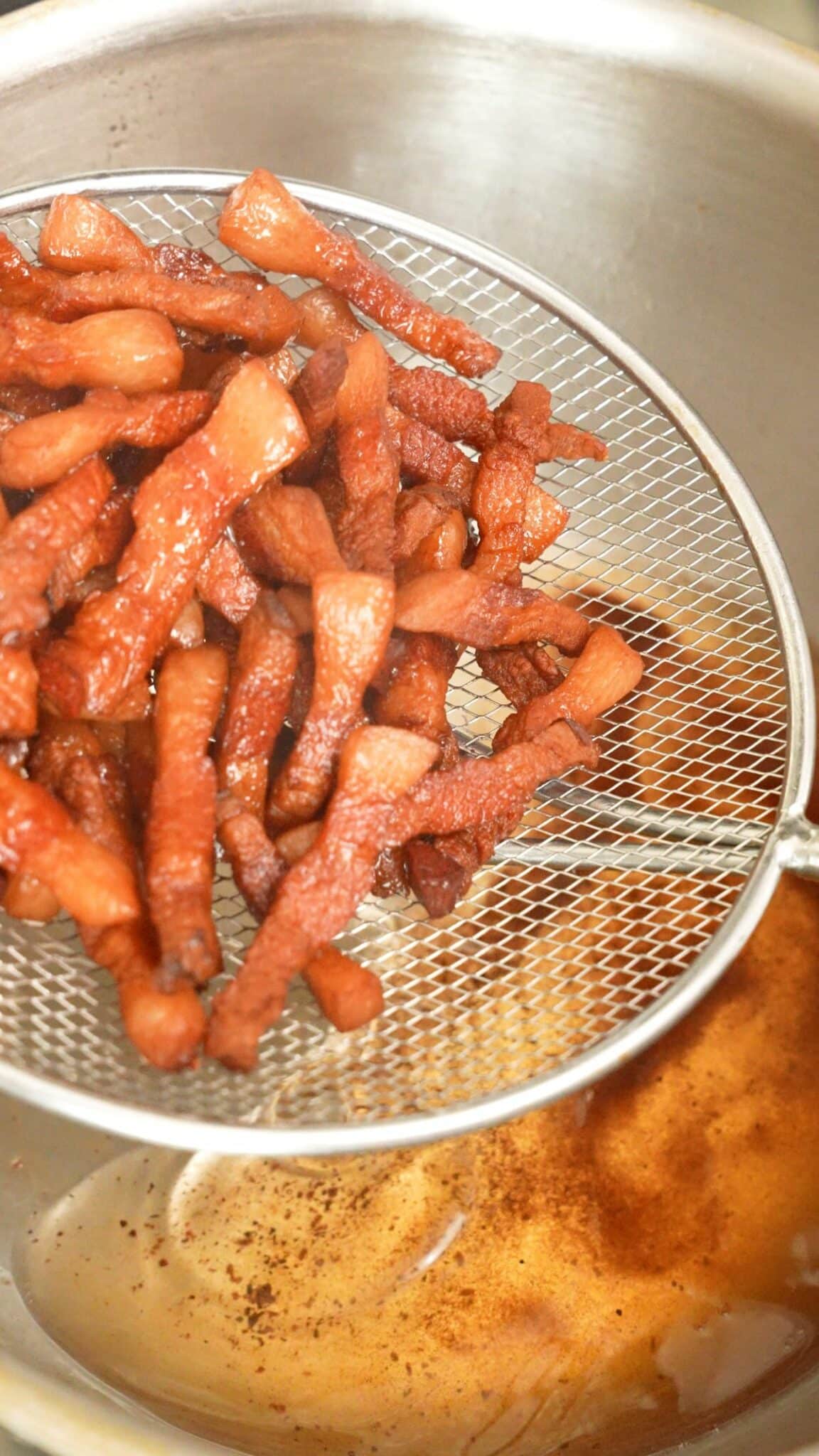
At this point, you’ll notice some darker residue after crisping up the guanciale. While the guanciale fat is essential to making the sauce, that charred residue is not, so I’ll remove it.
I’ll pour out the guanciale fat into a bowl, leaving the residue in the pot, then wipe it out completely with a paper towel and discard it. Then add back the residue free guanciale fat. It’s a small extra step that helps prevent the sauce from tasting bitter or burnt.
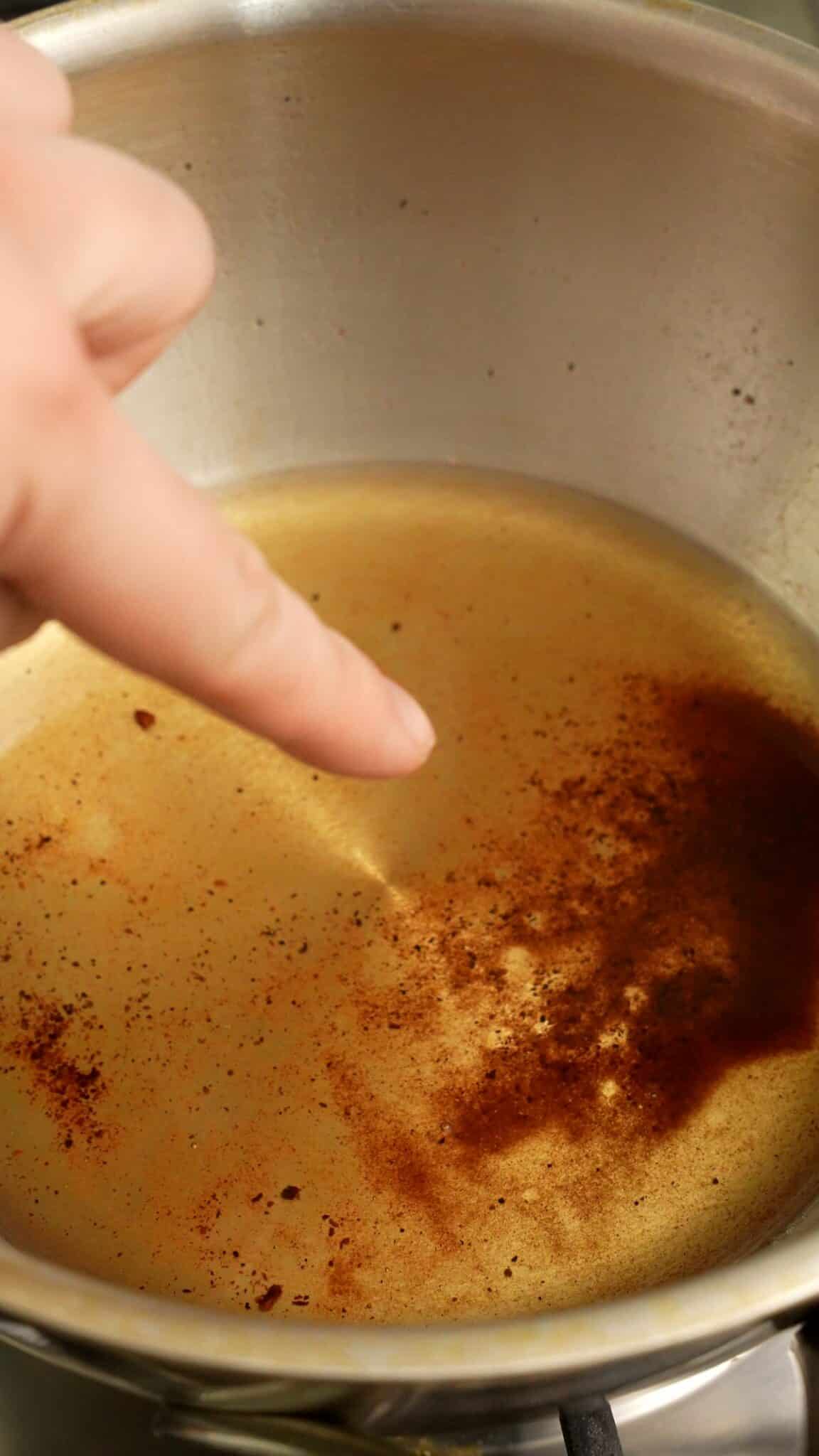
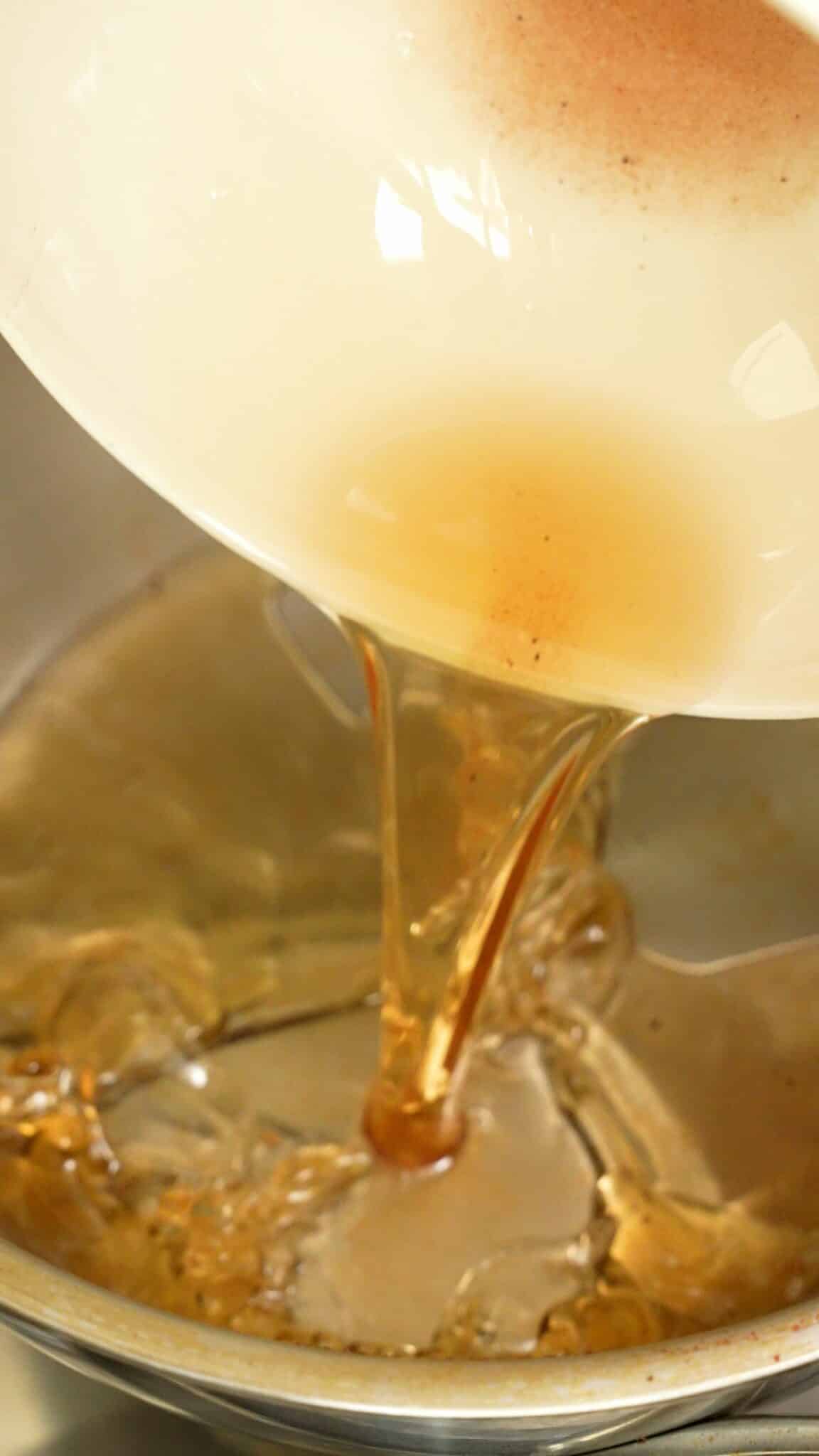
2. Add The Tomatoes
Add the San Marzano tomatoes to a large bowl and use your hands to crush the tomatoes, removing any hard ends of the tomatoes. I like to hand crush the tomatoes and use this as an opportunity to remove any of the tougher root ends that sometimes remain on canned tomtoes. Removing the tougher pieces will make for a better sauce!
Add the crushed tomatoes to the pan with the guanciale fat. Season with crushed red pepper, salt, and pepper to taste, and simmer on low while you wait for the pasta water to boil.
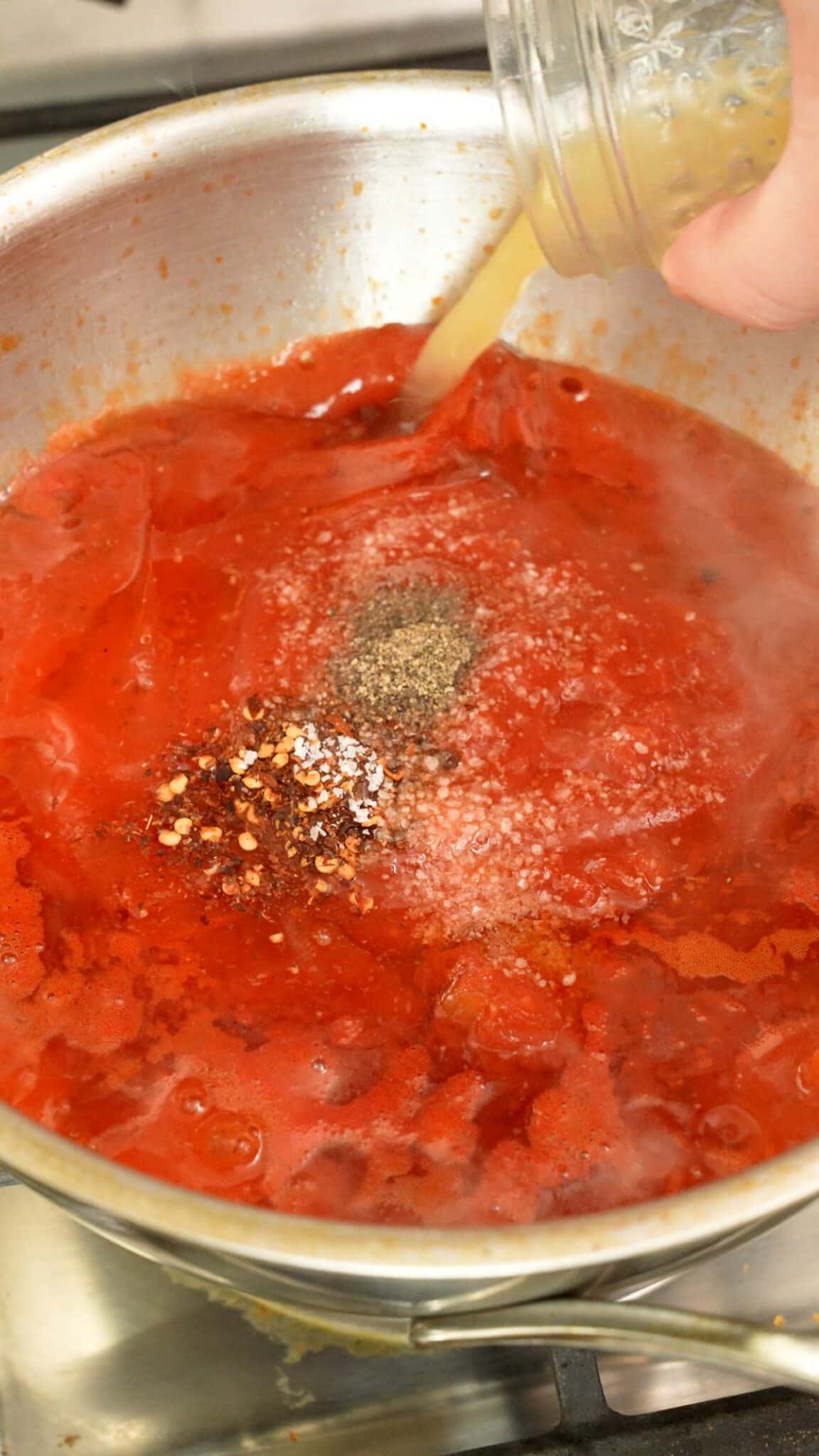
3. Cook Pasta and Mix
Cook pasta in salted boiling water for 1 minute less than the package’s al dente instructions. Salting pasta water is the first step to seasoning your dish! I use 1 tablespoon of kosher salt for every 5 quarts of pasta water. The pasta will continue to cook when tossed in the warm sauce, so I like to undercook it to avoid overcooking later.
Add the pasta immediately to the sauce and mix to combine.
Add a ladle of pasta water and mix into the sauce and pasta. Add a handful of grated pecorino and continue mixing until the sauce is glossy and slightly thickened.
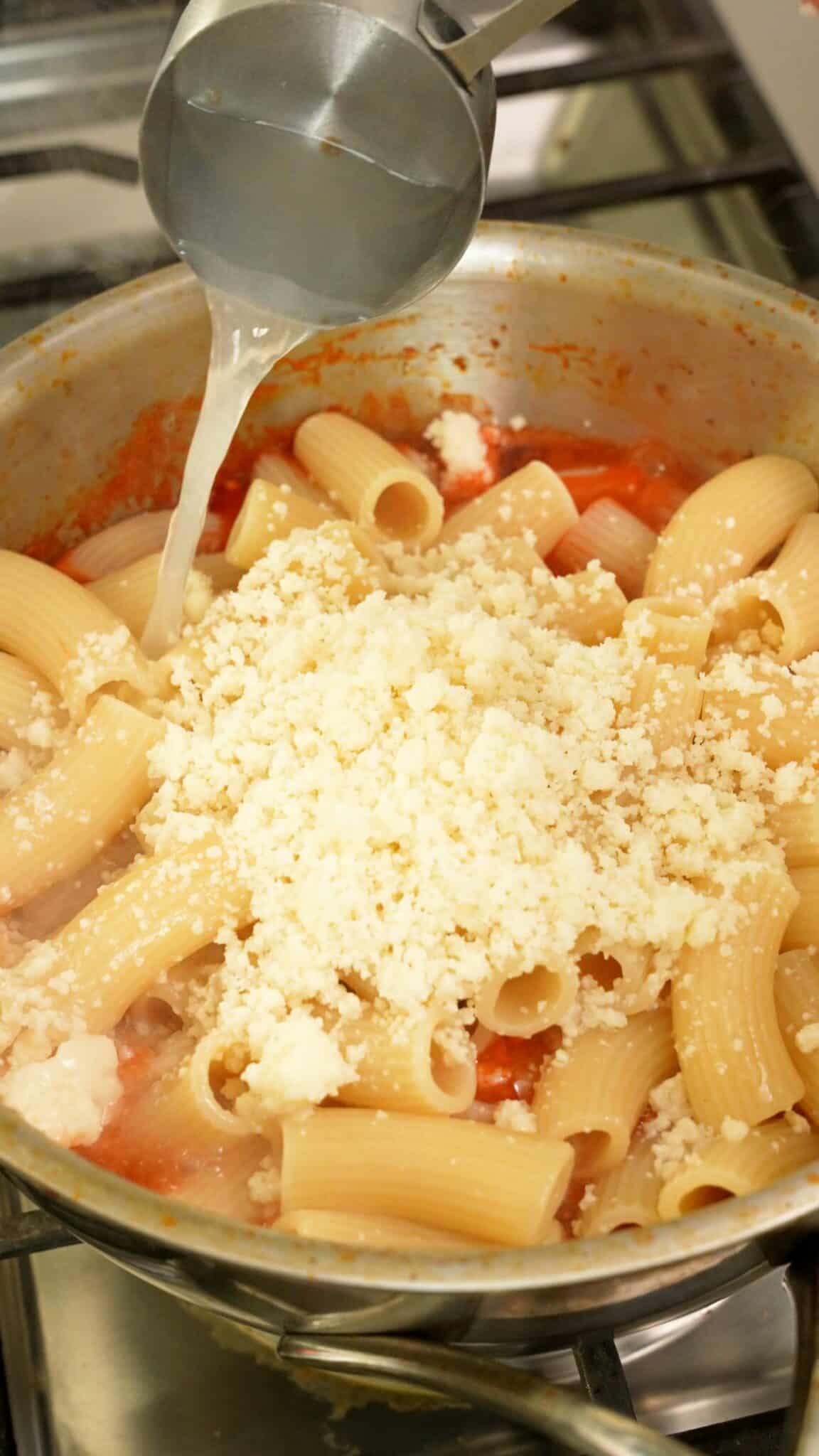
My Pro Tip
Use the Pasta Water to Adjust!
Tip: The Amatriciana sauce will continue to thicken, so it’s imperative you keep your pasta water so you can use it to create the consistency desired for your sauce. If the sauce is too thin, let it continue reducing with the pasta in the pot. If it’s too thick, add a 1/4 cup of pasta water at a time until the sauce is loose enough.
Add about 3/4 of the crispy guanciale back to the pasta and stir it in with the sauce and pasta.
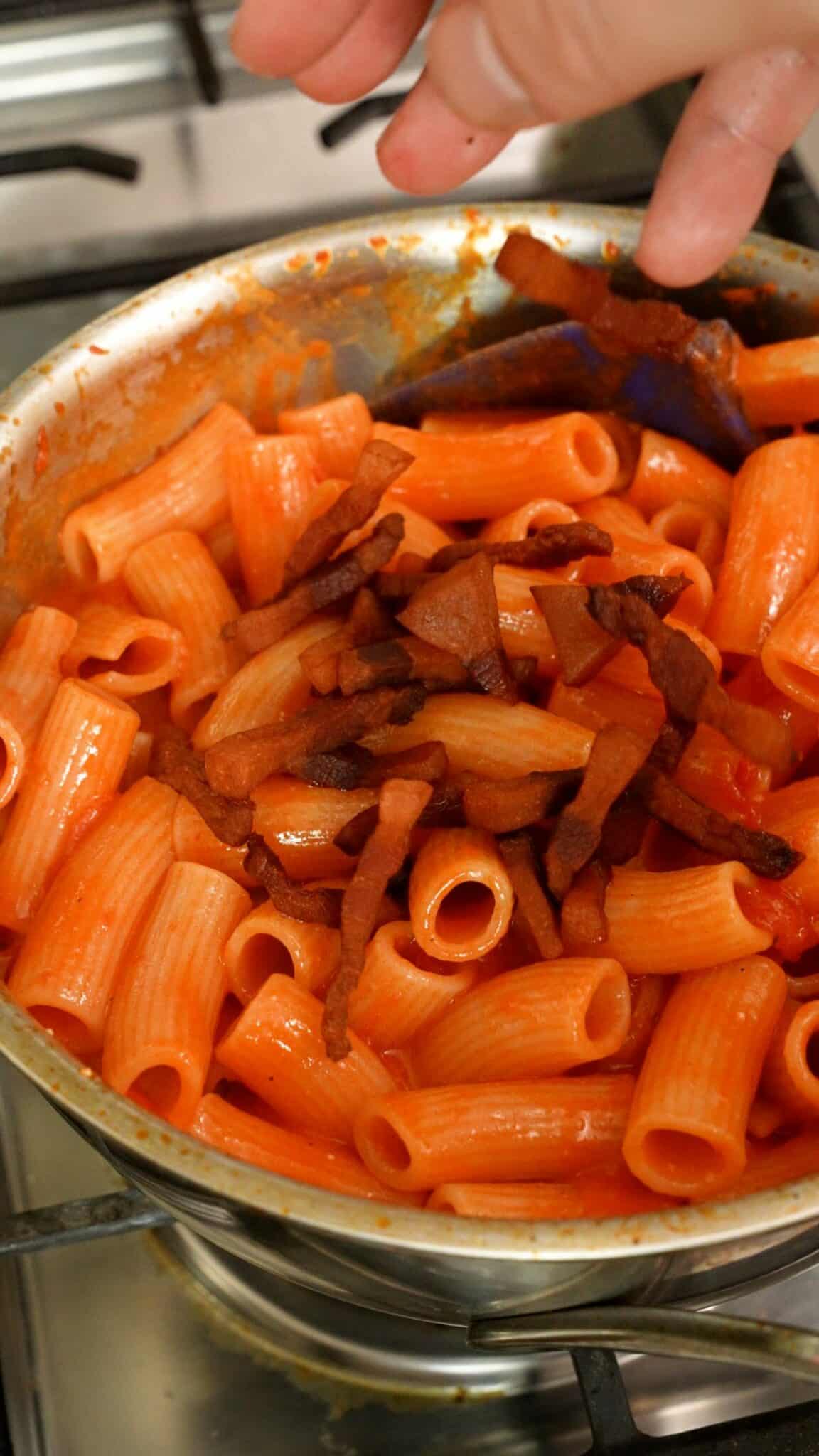
Add more pecorino romano cheese and stir to combine. Serve on a hot plate top with a few pieces of the remaining crispy guanciale and pecorino cheese and enjoy!
Recipe Tips for Pasta Amatriciana
- If you can’t find guanciale, pancetta or bacon will work in a pinch.
- Cook your guanciale in a cold pan – this will help render out the fat. If you cook it in a hot pan, it’ll result in the guanciale being fried. The rendered fat will add richness and flavor to your Amatriciana sauce, which is quite simple and only has a handful of ingredients.
- Canned peeled tomatoes sometimes may still have tougher root ends of the tomatoes. I like to hand crush the tomatoes and remove these tougher ends so they don’t end up in the sauce. This extra step is worth it for the end result.
- Save your pasta water! When mixing your pasta, sauce, and cheese, you’ll notice that it will thicken over time. The pasta water can help you loosen the sauce and create the consistency you want.
- Using a pasta pan, like a saucier, allows you to toss the pasta in the sauce with cheese to help the pasta cling to the sauce. You’ll hear a swishing sound when tossing which lets you know you’re tossing it correctly!
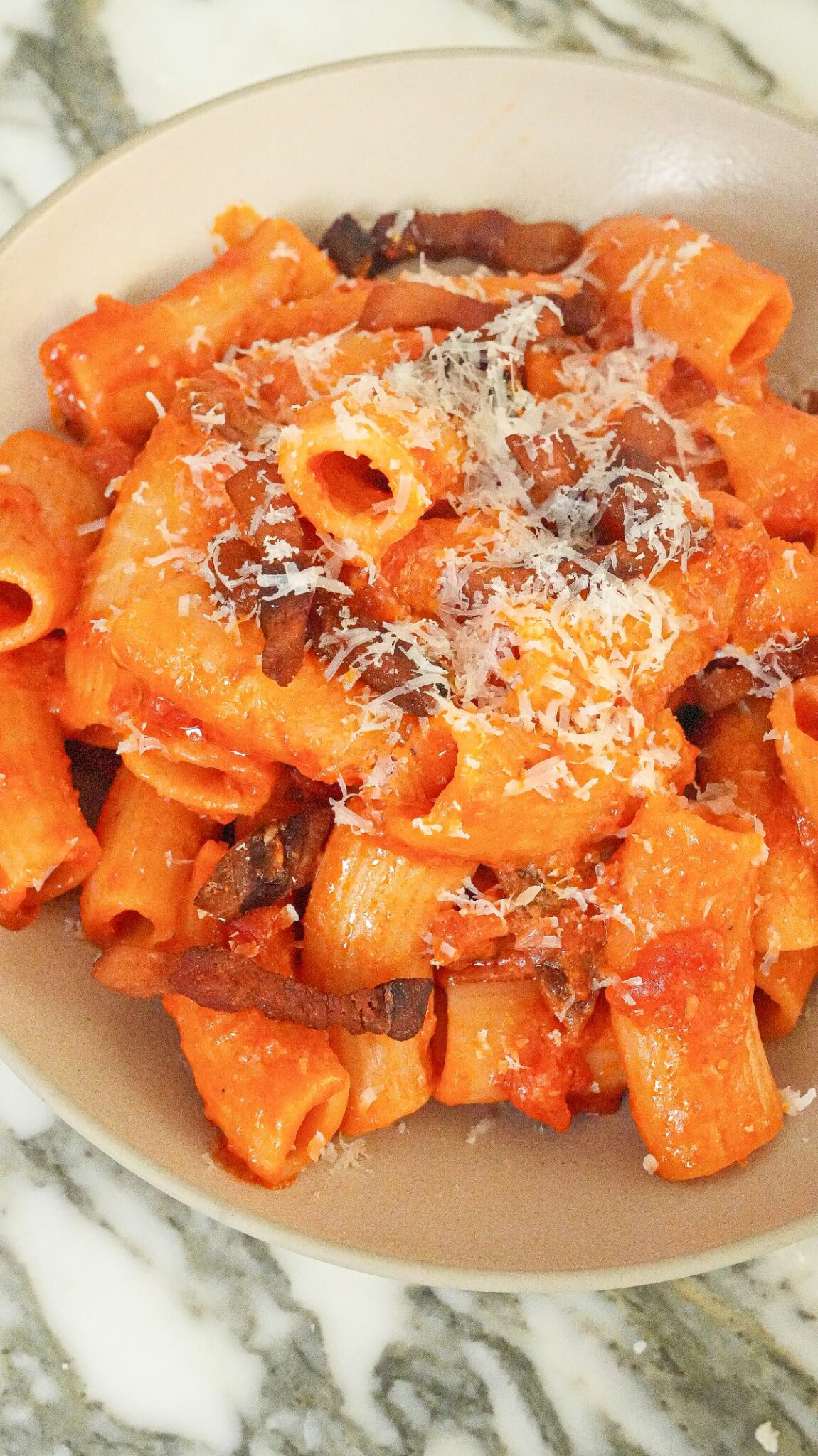
Storage, Reheating, and Make Ahead
Store any leftover Pasta Amatriciana in an airtight container in the refrigerator for up to 3-4 days. The pasta will soften as it absorbs more of the sauce, and the sauce will thicken while stored in the refrigerator. The flavors will still be delicious but keep in mind that the textures will change slightly.
Reheating in the microwave with a wet paper towel over the bowl or container to help ‘steam’ the pasta. Sometimes I like to add in a tablespoon of water to help loosen up the pasta sauce.
I don’t recommend making this ahead of time, as Pasta Amatriciana (and most pastas) taste best served fresh.
If you tried this Pasta Amatriciana or any other recipe on my website, please leave a 🌟 star rating and let me know how it went in the comments below!
Pasta Amatriciana (Authentic Recipe with Video!)
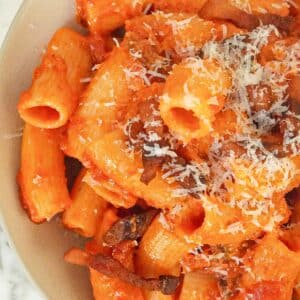
Ingredients
- 8 oz guanciale
- 16 oz pasta rigatoni, bucatini, or spaghetti
- 3.5 oz pecorino cheese finely grated
- 1/2 tsp crushed red pepper
- 1 28 oz peeled San Marzano tomatoes crushed; can sub with regular tomatoes
- ½ tsp kosher salt
- ¼ tsp black pepper
- 1/2 cup white wine
Instructions
- Slice your guanciale into 1/4" thick slabs then 1/4" strips and place in a cold pan. Turn the heat up to high and cook for 5-6 minutes until the fat has rendered out and guanciale is crispy. Remove the guanciale to a paper towel lined plate. Drain the fat to a bowl, wipe out any burnt residue from the bottom of the pan, then return the guanciale fat to the pan.
- To the guanciale fat, add the crushed San Marzano tomatoes. Season with crushed red pepper, salt, black pepper, and wine, and simmer on low while your pasta cooks.
- Cook pasta to a minute before al dente in salted boiling water (1 tbsp kosher salt per 5 quarts of water), then add immediately the drained pasta to the sauce along with half a cup of pasta water and mix to combine.
- Add a handful of grated pecorino and continue mixing to thicken up the sauce over medium heat. Add 3/4 of the crispy guanciale to the sauce. Add the pasta to a plate, top with the remaining crispy guanciale and top with more freshly grated pecorino and enjoy!
Notes
- Store any leftover Pasta Amatriciana in an airtight container in the refrigerator for up to 3-4 days. The pasta will soften as it absorbs more of the sauce, and the sauce will thicken while stored in the refrigerator. The flavors will still be delicious but keep in mind that the textures will change slightly.
- Reheating in the microwave with a wet paper towel over the bowl or container to help ‘steam’ the pasta. Sometimes I like to add in a tablespoon of water to help loosen up the pasta sauce.
- I don’t recommend making this ahead of time, as Pasta Amatriciana (and most pastas) taste best served fresh.
- If you can’t find guanciale, pancetta or bacon will work in a pinch.
- Cook your guanciale in a cold pan – this will help render out the fat. If you cook it in a hot pan, it’ll result in the guanciale being fried. The rendered fat will add richness and flavor to your Amatriciana sauce, which is quite simple and only has a handful of ingredients.
- Canned peeled tomatoes sometimes may still have tougher root ends of the tomatoes. I like to hand crush the tomatoes and remove these tougher ends so they don’t end up in the sauce. This extra step is worth it for the end result.
- Save your pasta water! When mixing your pasta, sauce, and cheese, you’ll notice that it will thicken over time. The pasta water can help you loosen the sauce and create the consistency you want.
- Using a pasta pan, like a saucier, allows you to toss the pasta in the sauce with cheese to help the pasta cling to the sauce. You’ll hear a swishing sound when tossing which lets you know you’re tossing it correctly!
Nutrition
Nutrition information is automatically calculated, so should only be used as an approximation.

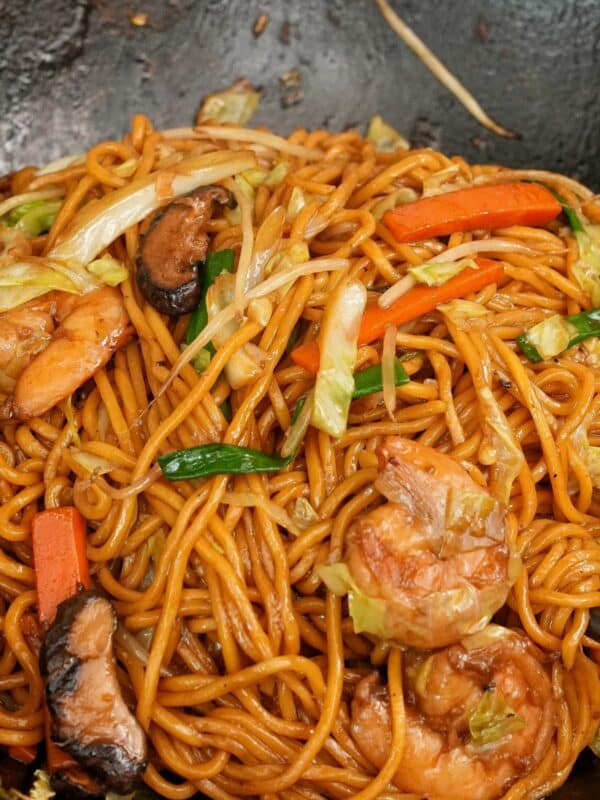
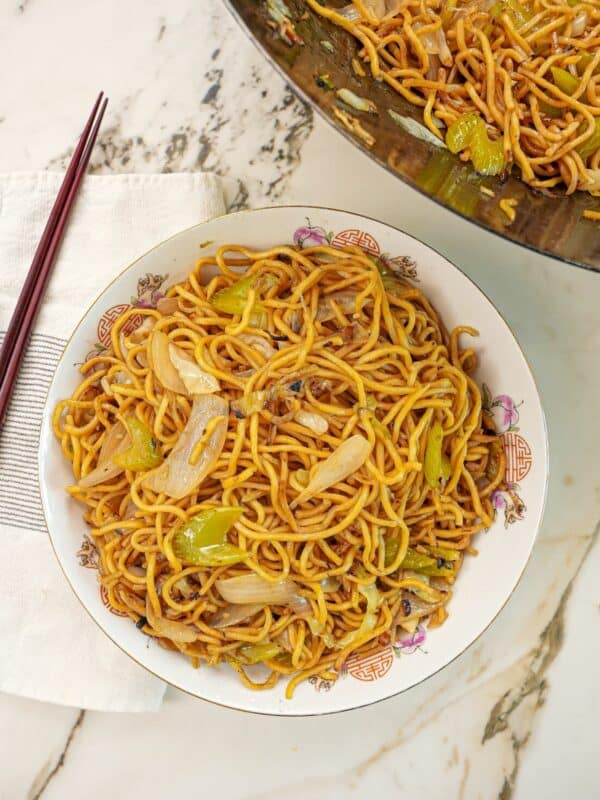
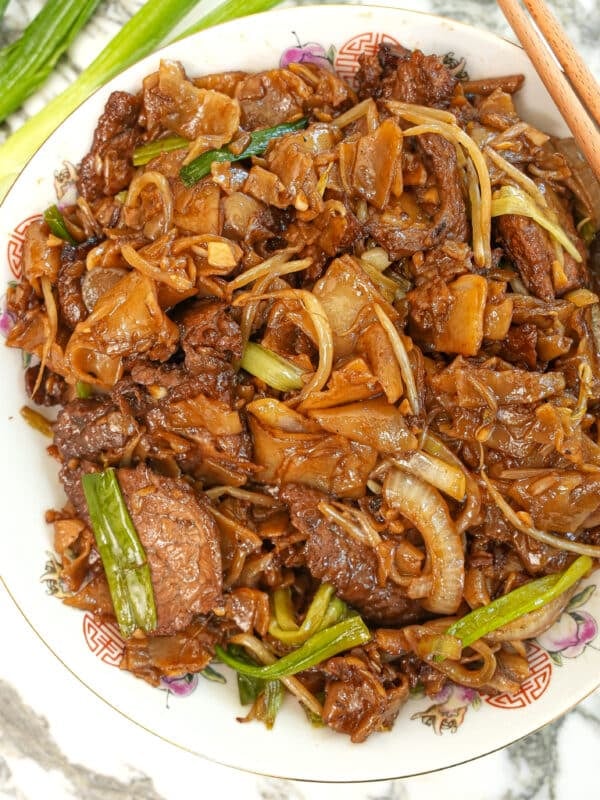
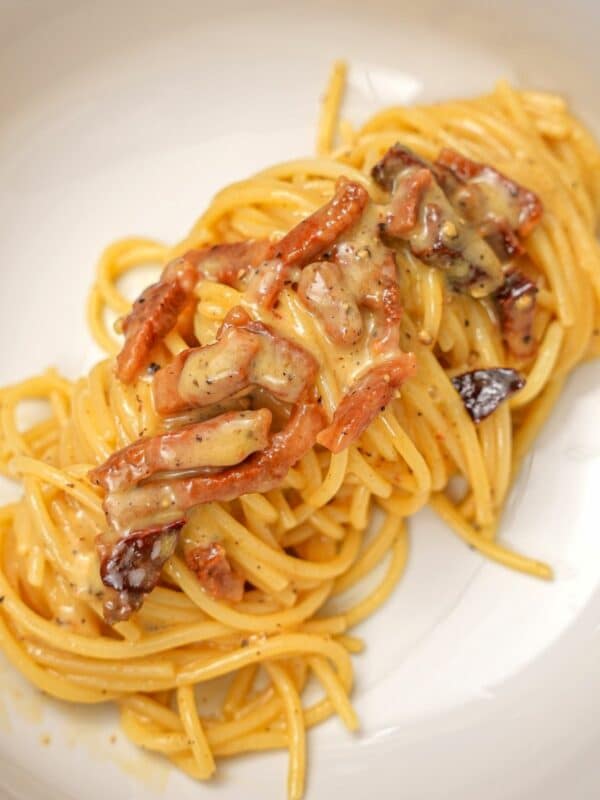







Hi CJ – this recipe calls for wine in the method, but no wine listed in the ingredients – HELP!
Sorry about that- thanks for the callout! I just added it. Enjoy!